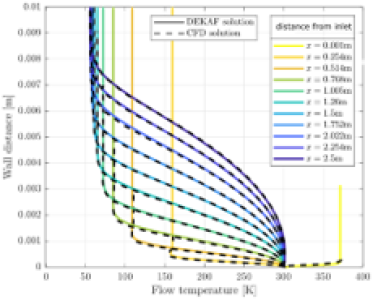De-risk assessment: Advanced Design Methodology for Laminar Boundary Layer Control

•Development of a design methodology for axisymmetric geometries delaying boundary layer instability growth
•Verification of the approach on literature data and sensitivity analysis on main influencing parameters
•Identification of technological barriers associated with the manufacturing of laminar surfaces and quality control
Laminar to turbulent boundary layer transition holds paramount importance in high-speed flow regime because of its impact on the aerodynamic performances and thermal management of the spacecraft. Despite decades of investigations, incomplete understanding of this phenomenon still contributes to hinder the design of advanced hypersonic vehicles justifying the need for additional investigations.
Chaining of three in-house software (inviscid code, boundary layer code and stability code) to efficiently design geometries and predict boundary layer stability along the geometry. Partial automation has been achieved to enable future optimization. Promising agreement with literature data has been demonstrated with our tool-set. Sensitivity study (varying geometry and boundary conditions) has shown that the main influencing parameter to delay transition onset is the wall surface temperature. Material selection and cutting-edge manufacturing techniques have shown the capability to cope with strict requirements with respect to surface roughness.
The innovative design methodology offers deep insights into the fundamental physics governing boundary-layer transition. Such tool can be used in many applications from hypersonic vehicle design or supersonic propulsion device.
The next target should be to optimize a geometry using the methodology developed through this activity. Manufacturing should follow to demonstrate that the required surface quality can be met.
